Audio

Little Royal
James Brown was widely known as Soul Brother Number 1, but longtime D.C.-area singer Little Royal was referred to by some as Soul Brother Number 2. That’s because, as Royal told me in 2013,
“James Brown looked at me and said we have to be brothers we look so alike.”
Born Royal Torrence in North Carolina in 1933, Little Royal had a musical repertoire that mixed originals with soul covers—including plenty of James Brown. Sometimes called the Godfather of Soul’s half-brother, Royal’s biggest success was his passionate soul stirrer “Jealous” that climbed up to the 15th slot on the 1972 Billboard R&B songs chart.

Royal and his band The Swingmasters had an instrumental number on the B-side of the single, “Razor Blade,” that also had a modicum of success and created a mini-dance craze. Royal says he created the dance for the song on the spot, when he was on the Cincinnati TV show Soul Street.
#Little Royal#Razor Blade#buddy rock#rock#jazz#funk#soul#soul brother number 2#grooves#get down#rare footage
7 notes
·
View notes
Audio

The Fantastics
When they arrived in Britain, they discovered that they were to be billed as The Fabulous Temptations, and were expected to perform Motown songs. However, they toured successfully and were invited to return, in 1968, by Sheffield club owner Peter Stringfellow, this time under another new name, The Fantastics.
They decided to remain in Britain, and recorded several singles released on MGM and then on the Deram label in England. They then signed to Bell Records, and released "Something Old, Something New", a song written and produced by top British songwriters Tony Macaulay, Roger Greenaway, and Roger Cook, based on a traditional rhyme

Although its follow-ups were less successful, the group remained a popular live attraction in Britain for several years, though with several personnel changes. Pitts left in 1972, later becoming a lecturer at the University of Huddersfield, as well as working with another vocal group, The Invitations.
Pitts' role in The Fantastics was part of a BBC Radio Four documentary by his son, the journalist and photographer Johny Pitts entitled 'Something Old Something New', named after the group's hit record. Both Ramos and Cheatdom also left in the mid-1970s, leaving Donald Haywoode as the only original member. By 1986, the Fantastics were still performing in Britain, on the nightclub and cabaret circuit, as a trio comprising Haywoode, Elvin Hayes, and Emma St. John.
Remaining in England, John Cheatdom formed The Realistics in 1976. The group broke up in 1983, and Cheatdom then joined various unofficial line-ups of the Platters, sometimes called the Magic Platters, who toured internationally.
1 note
·
View note
Audio

Pearly Queen
Cuban rock band from Miami, Pearly Queen, immensely popular in the early to mid 1970's on the burgeoning Miami music scene, attracted the interest of Carlos Andarra, who was the nephew of Panamanian President Andarra. Andarra licensed their debut album and they became the most popular Latin rock band in Panama. Band members included Alberto Arguelles on guitar, Paco Rodriguez on electric bass, Kenny Combs on organ and trombone, Carlos Salazarte on percussion, Raly Guanche on drums and lead singer Iggy Gelabert. They were joined later by Rudy Perez.

Pearly Queen's greatest success came from a single that was released shortly after their debut album was released but was not included on their album. The song was the infectious "Quit Jivin'," a track which has become an essential staple of the rare funk scene world-wide.
#pearly queen#buddy rock#rock#funk#jazz#soul#grooves#rare#rare footage#beats&breaks#get down#top rock#rocking
1 note
·
View note
Audio

The Soul Saints Orchestra
Hotpie & Candy Records was basically one band recording under various band names with various small alterations of the line-up. They started the label and released new singles off of a ton of one-off band names and a few that they came back to. The Soul Saints Orchestra seems to have a couple.

The biggest name seems to be The Poets of Rhythm who have 2 albums to their name. Also recorded with Lyrics Born a couple of times.
#The Soul Saints Orchestra#hotpie & candy records#buddy rock#rock your buddy#rock#funk#soul#jazz#grooves#get down#christmas#SoundCloud#beats&breaks
0 notes
Audio
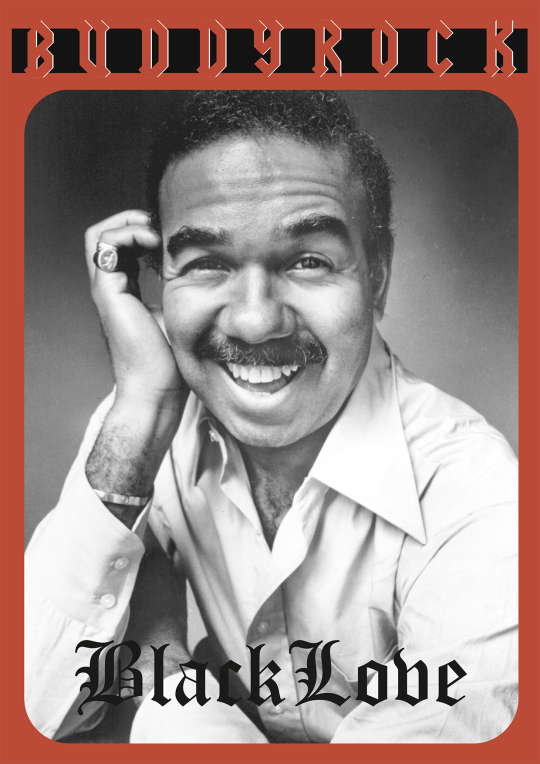
BlacLove
The sound of popular black music was changing in the mid-seventies, and during this time Blacklove was one of the prominent black groups in Pittsburgh. According to their manager and producer, Walt Maddox “That group was very successful. They were probably one of the most successful local bands, black bands, to come out of this area.” In 1975 James Brown released an album titled Sex Machine Today. The cover reads “Disco Soul – Dance, Dance, Dance.”
Even the Minister of the New New Super Heavy Funk was high-stepping into the disco era. It just so happens that Alan Leeds, who worked with both Blacklove and James Brown, moved to Pittsburgh prior to becoming Brown’s road manager.
“In ’69 I quit school to go on the road with Brown. And then I ended up coming back. I married a girl from Pittsburgh. I wanted to go to New York, but she wanted to go back home with her family. I moved back in ’73 or ’74. Walt was kind of managing and producing Blacklove. They were actually pretty hot for a couple of years. We’re kind of getting into the disco era here. It was around ’75. They became the hottest band in that region. You know … West Virginia, Eastern Ohio, Western Pennsylvania, the whole tri-state area.”

The core of the Blacklove originated west of the city in Beaver County. They were a spin off of the Notation Rock Band. According to drummer, Bobby Short “Those guys were older. They fell by the wayside and we picked things up. Rusty Carter, Francis Barnes (Jet) and me …we picked up a couple of other guys and kept going.”
The first Blacklove recordings feature Short (drums), Barnes (keys) and Carter (bass) along with Lain and Lina Lee (vocals), John "Doc" Eberhardt (guitar) and Robert “Mousey” Thomas (conga). Barnes, originally from New Jersey, attended Slippery Rock University. Short explains that things came together after Barnes graduated and moved to Homewood to teach at Westinghouse High School.
“Laine and Lina Lee were picked up when Jet moved to Pittsburgh. John Eberhardt was from McKees Rocks. We were at the Crazy Quilt and that’s where Jet met Walt Maddox.”
The whole story is here.
#BlackLove#Bobby Short#Russell “Rusty” Carter#Walt Maddox#buddyrock#buddy rock#rock#funk#soul#grooves#beats&breaks#rare footage
1 note
·
View note
Audio

Sunrise movement
Lenny Myers attended Pershing High School, where he performed in many talent shows. He began his professional career with the Casanovas in 1965, leaving his job with the Ford Motor Company.

He later joined another group in 1968, called the Sunrise Movement. In 1973, Lenny joined the Dramatics, and sang on his first album "A Dramatics Experience."
To find this groove in the marketplace you can go here.
Full Lenny Myers bio is here.
#sunrise movement#lenny myers#buddyrock#buddy rock#rare#rare footage#ooves#get down#rare records#rocking#dancing#rock#funk#soul
3 notes
·
View notes
Audio

Jonesy
Formed by brothers John and Trevor Jones, this prog rock band had three albums out on the Dawn label in the early 1970s. Always racked by internal tensions, there were various musician changes along the way.
With their three early-'70s Dawn albums fetching high prices in the collector shops, it was a good thing El took up the cause in 2007 and released a collection of Jonesy's material, titled Ricochet: Pioneering in 1972-1973, that the rest of us could afford.

Culling tracks from their scant three LPs (1972's No Alternative, as well as 1973's Growing and Keeping Up), El put together a pretty representational spread of tunes. The band had two major facets -- thundering, King Crimson-esque prog and drug-addled psychedelia -- and both get equal billing on Ricochet.

The title track from their debut, No Alternative, was a heavy, greasy, muscular piece of early prog, while "Ricochet" (from the same record) injects discotheque glam into the complex, surging heaviness, recalling the theme music from the sci-fi television show Space.
#jonesy#buddyrock#buddy#buddy rock#rock#progressive#prog#psycodelic#jazz#funk#grooves#rare#rare footage#underground#get down
0 notes
Audio

Yuri Morozov
Yuri Morozov (6 March 1948 – 23 February 2006), was a Russian rock Multi-instrumentalist, sound engineer and composer. He created his own style using Progressive rock, Psychedelic rock, Experimental music, Folk music, Jazz and many more. Besides having his own musical career, he also participated in the recording of albums of many soviet rock bands.

You need to know exactly who is screaming that rock and roll is dead. Usually people who are far from rock and roll are screaming, all these party people. Rock and roll is always fun, not longing. And when you sit on a record and no one knows what to do, how to write, why ...
Full wiki bio is here.
#Yuri morozov#buddy rock#rare#rare footage#get down#rock#jazz#funk#soul#beats&breaks#breaks#rocking#superbreak
0 notes
Audio

The Protein Bros.
Dennis Dragon was the youngest son of the world-renowned arranger, composer and conductor Carmen Dragon and opera soprano Eloise Dragon. The five Dragon siblings all became musicians with Dennis playing drums. Brother Daryl is “The Captain” of The Captain and Tennille. Dennis produced and engineered their first album, including the Grammy winning hit “Love Will Keep Us Together.” Dragon worked with Johnny Rivers and Carole King. He played drums for more than a decade with The Beach Boys and toured with The Byrds, Neil Young, Rick Springfield and others.
Dragon had great success as the founder of the zany rock band “The Surf Punks,” writing, singing, engineering, drumming and producing videos for the band.
“Dennis recorded every drop of that—produced it,”
his cousin Alan Goulding related. Through his dad, who had recording equipment, Dragon learned the business at a young age.

“The Surf Punks were huge locally. Everyone in Los Angeles knew them,” Goulding said.
“Dennis had a life unlike anyone else. He never worked for anyone. He was always independent. He never worked at a job like a lot of us have.”
Goulding indicated a lot of big name bands wanted Dragon as their drummer, but Dragon was more interested in body surfing. “Huge success was never anything that Dennis really respected for himself. It was all about ocean, beach, Frisbee and ping-pong.”
Full story is here.
3 notes
·
View notes
Audio

Biddu Orchestra
Biddu Appaiah is an Indian-born in 1944 , England-based singer-songwriter, composer, and music producer – who composed and produced many worldwide hit records during a career spanning five decades.

Biddu held an interest for bigger things in popular music, and in 1967 left for England. He traveled through the Middle East, earning money by singing catchy numbers and playing the guitar. Biddu arrived in England at the age of 23, a few months after leaving India. About his arrival in England, he said in an interview to the BBC:
"I didn't really know too much about England or anything – I'd just come here on the chance of meeting the Beatles and doing some music. Everything that I did had this danceable flavour".
Within a few months of his arrival, he had met The Beatles, but expressed disappointment that "Lennon was dressed so badly."

Full wiki bio is here.
6 notes
·
View notes
Audio

VIE Blue Guitars
Blue Guitars is a vocal and instrumental ensemble created in early 1969 by composer and pianist Igor Yakovlevich Granov.
In 1968-1969, as part of the Soviet Music Hall, conductor Igor Granov was on a long tour on the American continent, during which he met Louis Armstrong in Mexico City. The experience and advice of L. Armstrong gained on these tours suggest Granov the idea of creating a new genre on the Soviet stage.

So in 1969 appeared “Blue Guitars” - a vocal and instrumental ensemble. The name was taken from German electric guitars with blue color. In the 1970s, tours of the Blue Guitars, like many other VIEs, were sold out at all venues in the Soviet Union. In the 1980s, interest in the VIE genre subsided and the group tried to hold the attention of the audience by experimenting with the genre and style from pop to heavy metal and constantly changing its name (”Igor Granov Group”, “Igor Granov Synthesis Troupe”, “The Game”), but by the beginning of the 1990s ceases to exist.
#Blue guitars#buddy rock#rare#rare footage#toprock#rock#soul#ussr#funk#grooves#beats&breaks#breaks#breakbeats#igor granov#heavy
3 notes
·
View notes
Audio

Can
Much of Can's music was based on free improvisation and then edited for the studio albums. For example, when preparing a soundtrack, only Irmin Schmidt would view the film and then give the rest of the band a general description of the scenes they would be scoring. This assisted in the improvised soundtrack being successful both inside and outside the film's context.

Can's live shows often melded spontaneous improvisation of this kind with songs appearing on their albums. The track "Colchester Finale", appearing on the Can Live album, incorporates portions of "Halleluhwah" into a composition lasting over half an hour. Early concerts found Mooney and Suzuki often able to shock audiences. The actor David Niven was asked by Czukay what he had thought of a concert, Niven replied:
"It was great, but I didn't know it was music."

After the departure of Suzuki, the music grew in intensity without a vocal centre. The band maintained their ability to collectively improvise with or without central themes for hours at a time (their longest performance, in Berlin, lasted over six hours), resulting in a large archive of performances.
Full wiki bio is here.
1 note
·
View note
Audio

Boobie Knight
Funk bandleader Boobie Knight specialized in a heavy, psychedelic-tinged, guitar-centered brand of groove, something along the lines of the proverbial stoned soul picnic.

Dubbing his first outfit the Soulciety, Knight landed a deal with RCA and recorded the album Soul Ain't No New Thing in 1972; it included jam-oriented tracks like "King of the Real Good Guys," "Power to the People," and the title cut. Moving over to Brunswick, Knight reorganized the band and renamed it the Universal Lady, taking on Al Johnson as lead vocalist.

1974's Boobie Knight & the Universal Lady expanded on the trippy vibes of the debut, with key cuts including "Earth Creature" and the oft-compiled "The Lovomaniacs." Knight's two albums are now considered collector's items among die-hard funk aficionados.
To get boobie knight records click here.
#boobie knight#the soulciety#ego trippin#rare#rare footage#rock#funk#jazz#psycodelic#get down#top rock#buddy rock
4 notes
·
View notes
Audio

Los Holy’s
Los Holy’s was an instrumental band out of Peru who formed in 1966. The band recorded one LP and several singles, and are considered to be among the first rock groups to experiment with psychedelic rock, surf rock, and latin beat.
Members included Marcos Goyzueta (lead guitar), Arturo Matto (rhythm guitar), Oscar Saenz (bass), Renzo Carozzi (farfisa organ), and Walo Carrillo (drums).
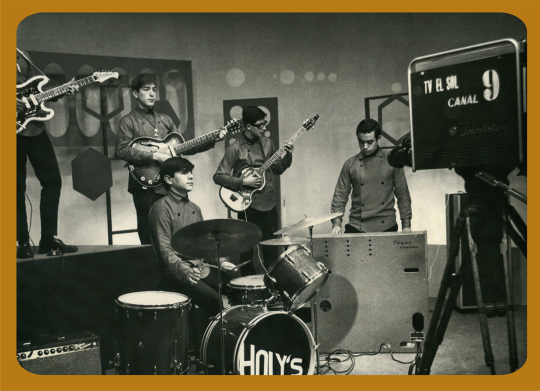
Initially known as the Sharks, the band formed in late 1966 by friends who were studying at GUE. Bartolomé Herrera in the district of Pueblo Libre. Upon finishing school, the band changed their name to Los Holy’s. Their first single, “Holy’s Psychedelic” / “Ginza Lights,” was recorded on the Dinsa/Success label, founded by Alberto Maravi. When it came to the band’s album, there were moments of tension between the members. Their manager and Carozzi wanted to record a more traditional album, whereas Walo, Goyzueta, and Saenz wanted to record something that was more along the lines of bands like Cream.
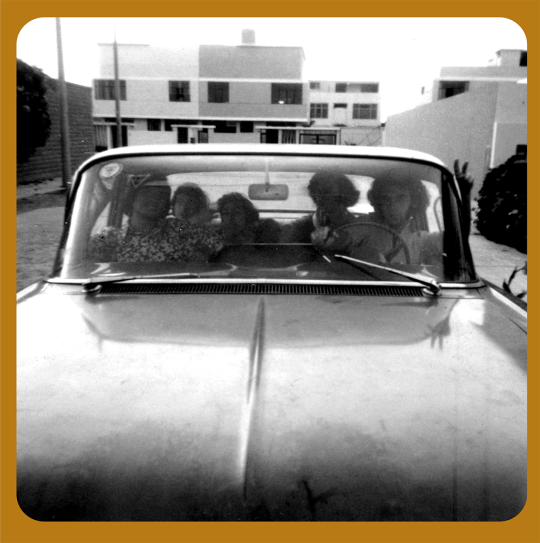
The album, Sueño sicodélico (Psychedelic Dream), was groundbreaking at the time of its release with its psychedelic and surf sound. The liner notes to the LP were of interest too. They said
“We know all the sounds in the seabed? space stations do not capture waves produced thousands of light years? , try to reproduce those sounds with our instruments and perhaps being more pleasant than the sound of waves.”
Los Holy’s recorded a handful of singles before disbanding in 1969.
You can find their outstanding records here.
#los holy's#rare#rare footage#soul#funk#toprock#rock#rockdance#buddy#buddyrock#beats&breaks#breaks#downrock#getdown
1 note
·
View note
Audio
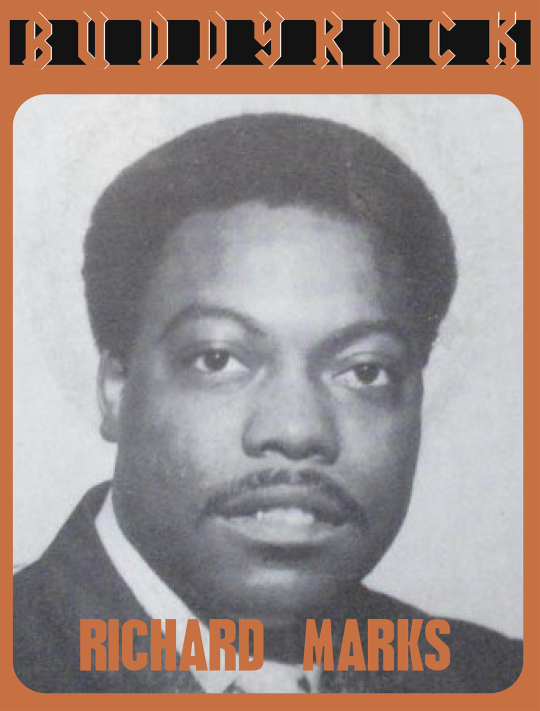
Richard Marks
Funk fans love several of guitarist/vocalist Richard Marks’ 45s and indeed he did make some high class dance music – but there was more to his career than that. It seems as though his first release was the initial 45 for the legendary Tuska label from his home town Atlanta, GA.
His own “Funky Four Corners” ran to two parts, with the second half being a fine advertisement for his guitar work. Although this got a national release on Roulette it never dented the charts. His second single “I’m The Man For You” is another spare funky workout, with more than a hint of the Soul Brother #1 in his axe style and horn arrangement.
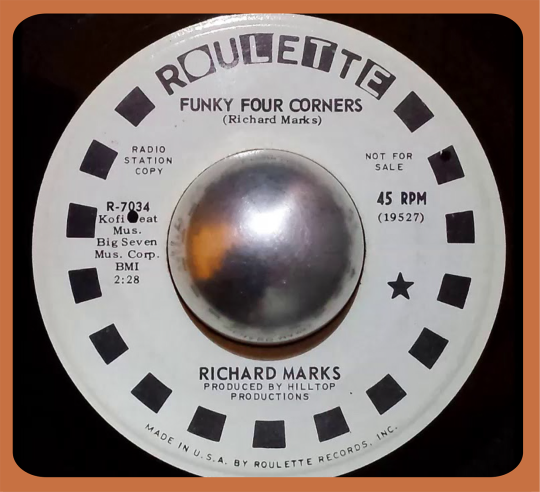
Georgia music man Tee Fletcher had more than hand in Marks’ upbeat “Don’t Take It Out On Me” which was leased out to Shout. The flip “Love Is Gone” is in a similar vein, but the better melody and higher grade performance from Marks make this the preferred side. His third Tuska 45 was for me his best to date. ListenDid You Ever Lose Something was a fine piece of strutting southern soul with some fine horns, and the flip “Never Satisfied” was another JB styled funk winner. The odd ball release from his Did you ever lose something - TUSKA 112stay with Tuska was the Christmas 45. “Home For The Holidays” was a pleasant if unremarkable toe tapper, but the flip “Mr Santa Clause” was a revelation. A dead slow blues of considerable power it was the first time that Marks was able to show off his chops on a ballad.
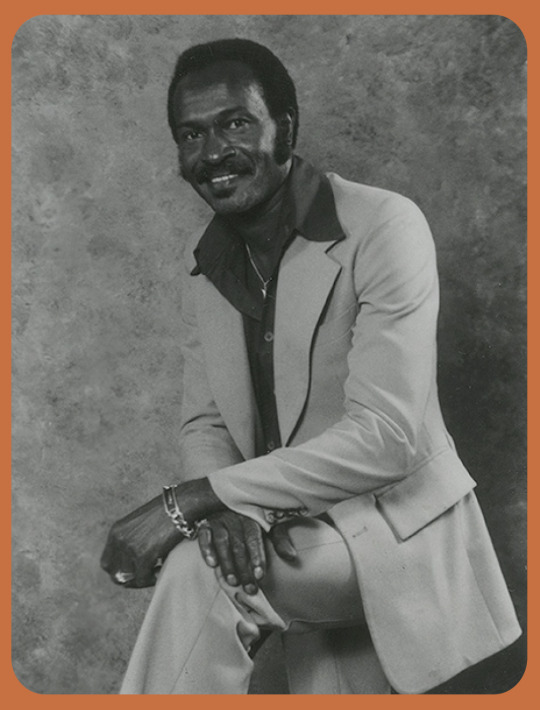
During the 70s Marks worked with Bill Wright for some time and they shared labels like Tuska and Note together.
Now in 2019 you can touch funk oldschool legend Richard Marks by your own by clicking here
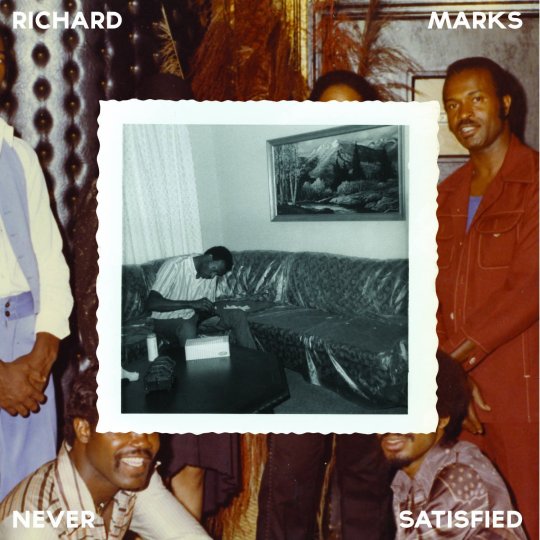
These songs, found on reels that Marks kept in his home, color Marks’ stylistic development – from his earliest work for the legendary Tuska label in the late ‘60s, through his more mature releases on smaller regional labels into the late ‘70s.
Marks’ story is that of an unsung soul and funk hero; he was a guitarist, vocalist and songwriter whose phone number was in Al Green’s, Barry White’s and Eddie Kendricks’ rolodexes, but his talents have only been heard in sporadic bursts. He and his music are unknown to the majority, but to an obsessive minority, he is a lightning rod: that singular point at which numerous Southern soul and funk musicians converged and exploded, spreading wondrous music in all directions.
Marks died of cancer in May 2006. His first album was our Never Satisfied anthology, released posthumously. He stands out as a most mysterious talent to originate from Atlanta, a city that birthed no shortage of genius, and Love Is Gone – The Lost Sessions 1969-1977 further makes the case for a reassessment of his talents and his place in the soul and funk canon.
Oldschool 45′s are here
#richard marks#rare_footage#rare#soul#funk#jazz#rock#grooves#outstanding#beats&breaks#get down#toprock#downrock#rockdance#jerks#burns
1 note
·
View note
Audio

VIE KOBZA
The vocal and instrumental ensemble "Kobza" was created in 1971 in Kiev, consisting of Alexander Zuev (musical director, keyboards), Konstantin Novitsky, Vladimir Kushpet, Alexander Rogoza (bandura players), Georgy Garbar (flute, pipe), Valery Viter ( vocals) and Anatoly Lyutyuk (percussion instruments).
In September 1971, the company "Melody" ordered from the leading Ukrainian singer Valentina Kuprina to record a small disc, VIE "Kobza" was invited to accompany him when recording. The three songs recorded with Kobza were so liked by the editors of Melody record company that it was decided to record a solo record of the ensemble ... This record gained phenomenal popularity not only among listeners in the Soviet Union, but also throughout the world.

And in 1973, the first official recognition came to VIA Kobza - at the “All-Union Competition of Vocal Instrumental Ensembles” in Minsk, she shared the third place with the Muscow ensemble. The first time received the "Pesnyary", the second was not awarded to anyone. Such a successful performance opens up great opportunities for the ensemble to tour not only in Ukraine, but throughout the Soviet Union.
Since 1979, the most striking rise in popularity has begun at VIE Kobza. The ensemble prepares new programs, updates stage costumes, gives solo concerts several times a year on the main stage of the country - the Ukrainian Palace. "State Concert", which at that time was engaged in foreign tours, puts the ensemble on a regular schedule, where trips are scheduled for 5 years in advance. And, in general, in the 80s of the 20th century the ensemble becomes one of the most touring groups of the “Ukr-contsert”, giving more than 200 concerts in a year. The travel geography covered the entire former Soviet Union, European countries, Canada, Japan, etc.

The basis of VIE Kobza’s repertoire was composed of Ukrainian folk songs, to a lesser extent songs by Soviet composers. Several records and music videos of the songs performed by the ensemble have been published.
Unfortunately, the life of creative teams is often not cloudless. Musicians are unyielding, rebellious people, their emotions clearly prevail over the radio. According to the classical definition, the real life of the theater team is one and a half decades. This postulate was also true for VIE Kobza. Artistic directors changed, the fluidity of the composition exceeded all permissible limits, the repertoire ensemble lost its originality, except for the name, however, remained intact. Old baggage could not save anything. From the mid-80s, the ensemble began to decline.
#kobza#rare_footage#funk#rock#soul#grooves#buddyrock#soviet#breaks#breakbeats#ultimate#beats&breaks#magazine
3 notes
·
View notes
Audio

Salinas
Daniel Salinas, from Sao Paolo, released only two albums. “Paz Amor E Samba,” from 1972, was a collection of samba and other Brazilian styles. In 1974, “Atlantis” - a jazz-funk masterpiece in a Blaxploitation soundtrack style - was released.

The ambitious album is a mix of electric grooves, Baroque instrumentations, horns, conga, flute, and Fender Rhodes, sometimes dance-funky and other times classical-mellow. The album features a killer funk version of Richard Strauss’ “Also Sprach Zarathustra,” here named “Straussmania” (a song made popular as the theme to Stanley Kubrick’s 1968 movie, “2001: A Space Odyssey,” and recorded two years earlier by another Brazilian, keyboard maestro Deodato)

#rare_footage#rare#grooves#rock#funk#soul#jazz#breakbeats#toprock#buddyrock#downrock#get down#salinas#percussion#bongos#tap dance#dance#listen
1 note
·
View note